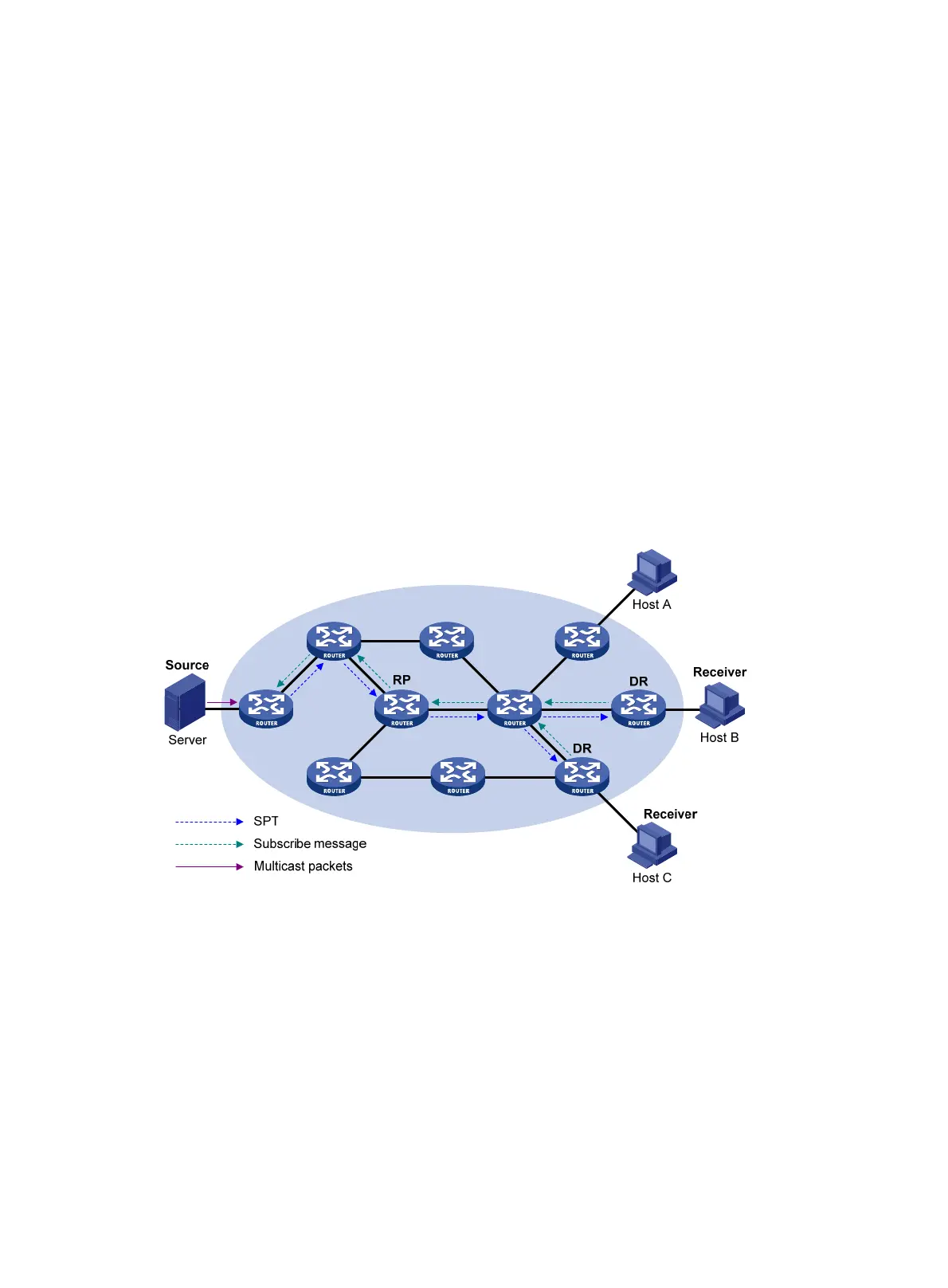147
The working mechanism of PIM-SSM is summarized as follows:
• Neighbor discovery
• DR election
• SPT building
Neighbor discovery
PIM-SSM uses the same neighbor discovery mechanism as in PIM-DM and PIM-SM. See "Neighbor
discovery."
DR election
PIM-SSM uses the same DR election mechanism as in PIM-SM. See "DR election."
SPT building
The decision to build an RPT for PIM-SM or an SPT for PIM-SSM depends on whether the multicast group
the receiver will join falls into the SSM group range (SSM group range reserved by IANA is
232.0.0.0/8).
Figure 51 SPT building in PIM-SSM
As shown in Figure 51, Host B and Host C are multicast information receivers. They send IGMPv3 report
messages to the respective DRs to express their interest in the information about the specific multicast
source S.
After receiving a report message, the DR first determines whether the group address in this message falls
into the SSM group range and then does the following:
• If the group address in the message does fall into the SSM group range, the DR sends a subscribe
message for channel subscription hop by hop toward the multicast source S. An (S, G) entry is
created on all routers on the path from the DR to the source. An SPT is thereby built in the network,
with the source S as its root and receivers as its leaves. This SPT is the transmission channel in
PIM-SSM.

